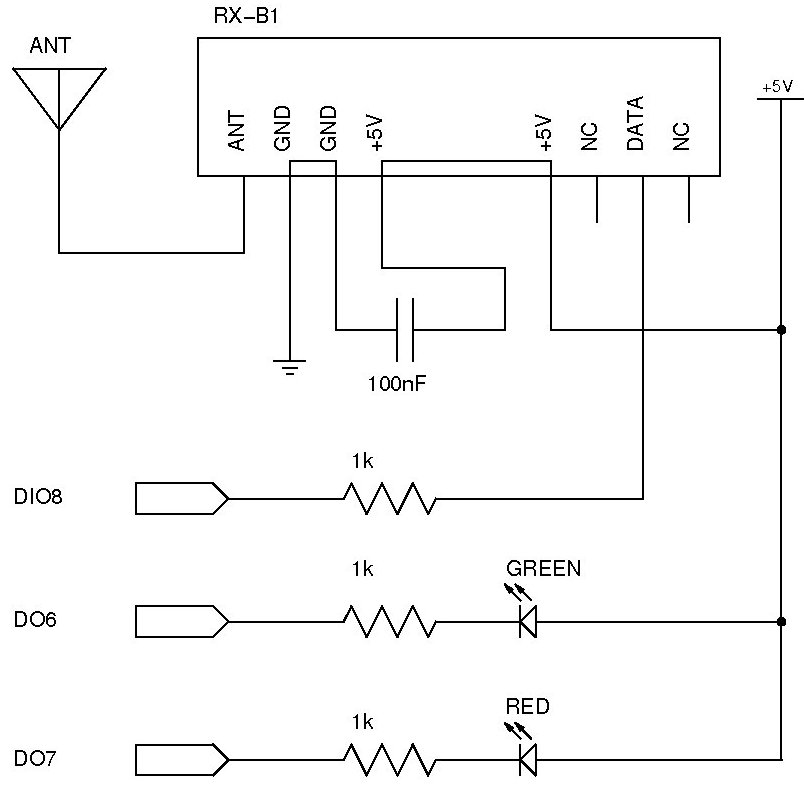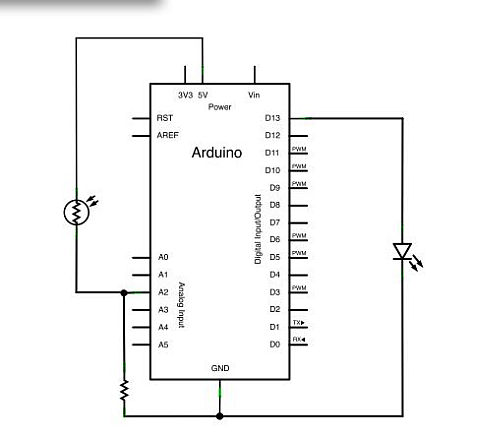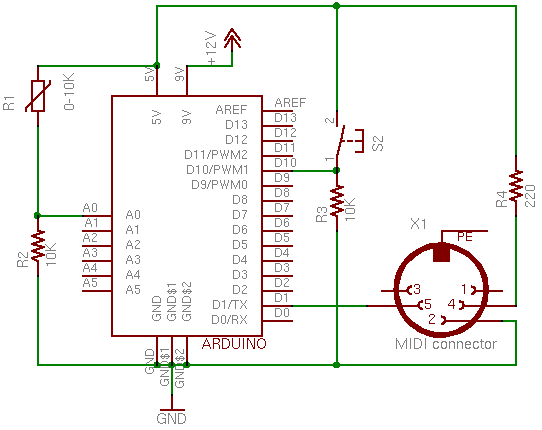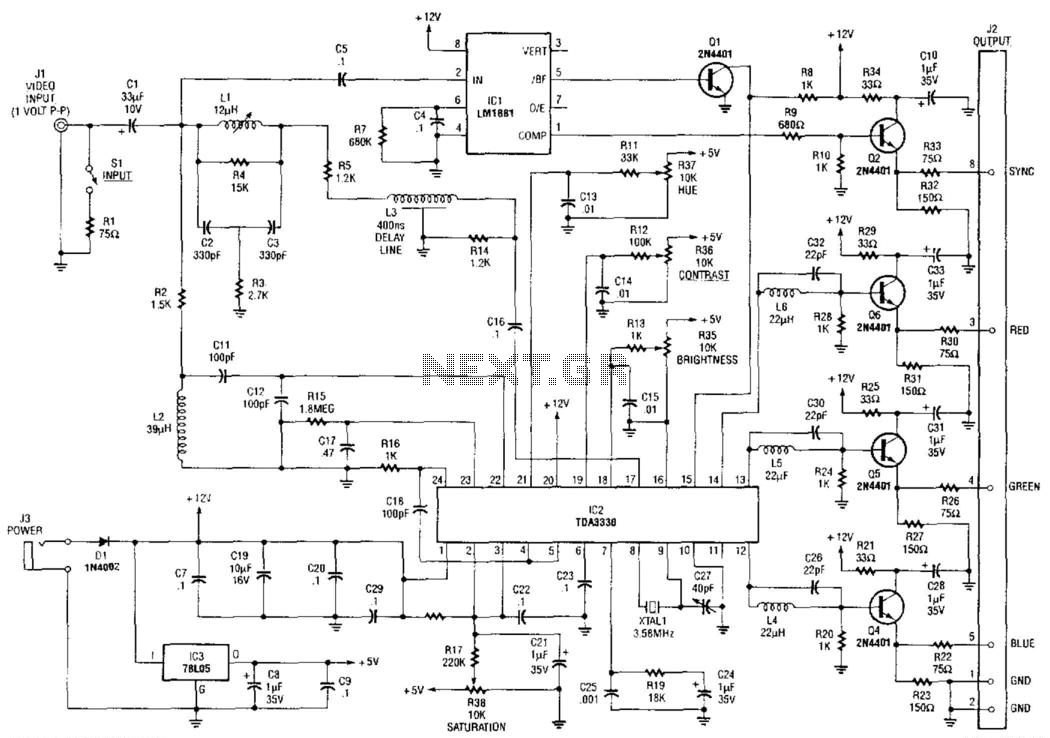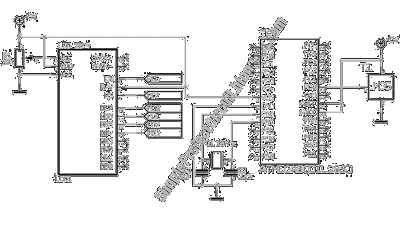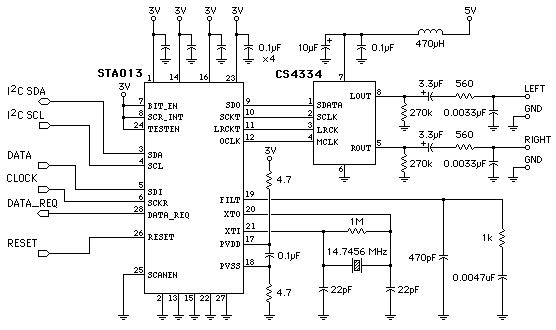
arduino code for buffalo ii dac lcd connection
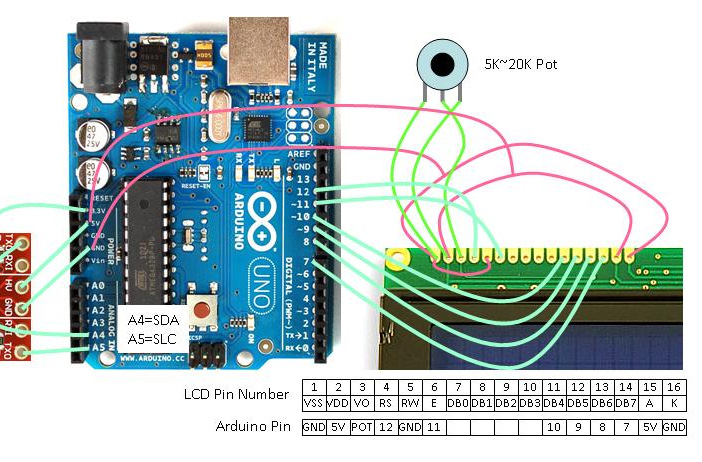
For an effective tutorial on connecting a standard LCD to an Arduino and utilizing the standard LCD library, refer to the LadyAda Tutorial on LCDs. The diagram illustrates the fundamental connections with a standard LCD that is compatible with the current Arduino LCD library. The contrast adjustment is manual.
The integration of a standard LCD with an Arduino microcontroller involves establishing specific connections that facilitate communication and control. The typical configuration includes connecting the LCD's data pins to designated digital pins on the Arduino, often using pins 2 to 7 for a 16x2 character LCD. The control pins, including the Register Select (RS), Read/Write (RW), and Enable (E), must also be connected to appropriate digital pins on the Arduino to manage data transmission effectively.
The LCD requires a power supply, typically 5V, which can be derived from the Arduino's power output. It is essential to connect the ground (GND) of the LCD to the ground of the Arduino to ensure a common reference point. Additionally, a potentiometer is often used to adjust the contrast of the LCD. This potentiometer is connected between the V0 pin of the LCD and ground, with the wiper connected to the V0 pin, allowing for manual adjustment of the display contrast.
The standard LCD library provided by Arduino simplifies the programming aspect. By including the library in the Arduino IDE, users can easily send commands and data to the LCD using predefined functions. The initialization of the LCD typically involves setting the number of columns and rows, followed by clearing the display and setting the cursor position for text output.
This setup is widely used in various applications, including simple user interfaces, data display for sensors, and interactive projects, showcasing the versatility of the Arduino platform in handling LCD displays.For a good tutorial in hooking up a ""standard"" LCD to Arduino and use the standard LCD library, see: LadyAda Tutorial on LCDs The diagram shows the basic connections with a ""standard"" LCD that is also compatible with the current Arduino LCD library. Adjustment for the contrast is manual with.. 🔗 External reference
The integration of a standard LCD with an Arduino microcontroller involves establishing specific connections that facilitate communication and control. The typical configuration includes connecting the LCD's data pins to designated digital pins on the Arduino, often using pins 2 to 7 for a 16x2 character LCD. The control pins, including the Register Select (RS), Read/Write (RW), and Enable (E), must also be connected to appropriate digital pins on the Arduino to manage data transmission effectively.
The LCD requires a power supply, typically 5V, which can be derived from the Arduino's power output. It is essential to connect the ground (GND) of the LCD to the ground of the Arduino to ensure a common reference point. Additionally, a potentiometer is often used to adjust the contrast of the LCD. This potentiometer is connected between the V0 pin of the LCD and ground, with the wiper connected to the V0 pin, allowing for manual adjustment of the display contrast.
The standard LCD library provided by Arduino simplifies the programming aspect. By including the library in the Arduino IDE, users can easily send commands and data to the LCD using predefined functions. The initialization of the LCD typically involves setting the number of columns and rows, followed by clearing the display and setting the cursor position for text output.
This setup is widely used in various applications, including simple user interfaces, data display for sensors, and interactive projects, showcasing the versatility of the Arduino platform in handling LCD displays.For a good tutorial in hooking up a ""standard"" LCD to Arduino and use the standard LCD library, see: LadyAda Tutorial on LCDs The diagram shows the basic connections with a ""standard"" LCD that is also compatible with the current Arduino LCD library. Adjustment for the contrast is manual with.. 🔗 External reference
